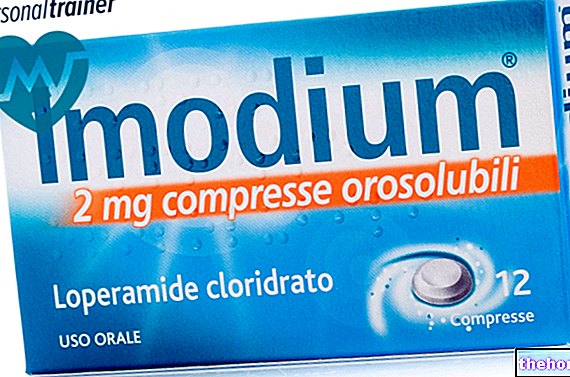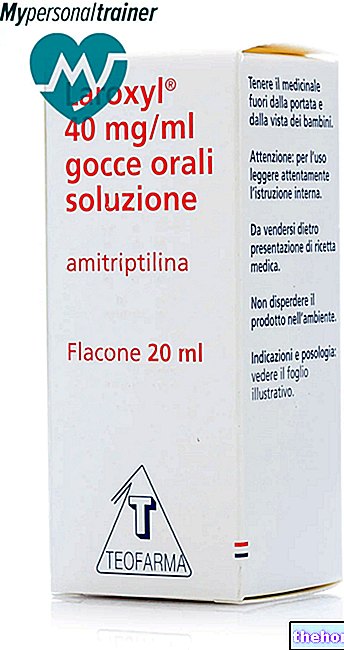Active ingredients: Ciclobenzaprine
Flexiban 10 mg coated tablets
Why is Flexiban used? What is it for?
Flexiban contains the active substance cyclobenzaprine hydrochloride.
It belongs to a class of medicines that relax the muscles (muscle relaxants).
Flexiban is used to relieve painful and excessive tension in your muscles (muscle spasm).
This excessive muscle tension occurs when muscles are damaged by:
- trauma;
- muscle tears;
- compression or irritation of a nerve in the spine in the neck (cervical radiculopathy) or lower back (lumbosacral radiculopathy);
- joint disease (arthrosis);
- disease of the fiber rich tissue, and therefore called "fibrous", of muscles, tendons and ligaments (fibrositis).
The improvement of symptoms is manifested by a decrease in muscle tension, the pain that accompanies it, the feeling of weakness and the limitation of movements, which allows a resumption of daily activities.
Contraindications When Flexiban should not be used
Do not take Flexiban
- if you are allergic to cyclobenzaprine or any of the other ingredients of this medicine (listed in section 6);
- if you are taking medicines called 'MAO inhibitors' used to treat depression, or if you have stopped taking them less than two weeks ago;
- if you have heart problems (heart attack, arrhythmias, atrioventricular block, conduction disturbances or congestive decompensation);
- if you have a thyroid problem (hyperthyroidism).
Precautions for use What you need to know before taking Flexiban
Talk to your doctor or pharmacist before taking Flexiban. In particular, tell your doctor if:
- have had or have problems with your heart or blood circulation (arrhythmia, sinus tachycardia, prolonged conduction time, myocardial infarction);
- have had a stroke;
- have difficulty passing urine (urinary retention);
- suffer from eye problems (narrow-angle glaucoma, increased pressure in the eye).
Children and adolescents
The use of this medicine in children and adolescents under 15 years of age is not recommended because the effects in this age group are not known.
Interactions Which drugs or foods may change the effect of Flexiban
Other medicines and Flexiban
Tell your doctor or pharmacist if you are taking, have recently taken or might take any other medicines.
Particularly:
- if you are taking medicines called 'MAO inhibitors' used to treat depression, or if you have stopped taking them less than two weeks ago;
- if you are taking barbiturates (medicines used for insomnia or to treat epilepsy) or other medicines that affect the nervous system because this medicine may increase their effects.
Flexiban with food, drink and alcohol
Avoid consuming alcohol while taking this medicine as it may increase its effects.
Warnings It is important to know that:
Pregnancy and breastfeeding
If you are pregnant or breast-feeding, think you may be pregnant or are planning to have a baby, ask your doctor or pharmacist for advice before taking this medicine.
Do not use this medicine if you are pregnant, unless your doctor has prescribed it as deemed necessary.
The medicine should be used with caution during breastfeeding, your doctor will advise you what to do.
Driving and using machines
Driving and using machines that require special attention are not recommended because this medicine can reduce alertness and make you feel tired.
Flexiban contains lactose. If you have been told by your doctor that you have an intolerance to some sugars, contact your doctor before taking this medicinal product.
Dose, Method and Time of Administration How to use Flexiban: Posology
Always take this medicine exactly as your doctor or pharmacist has told you. If in doubt, consult your doctor or pharmacist.
The dose will be determined by your doctor based on your disease. You may be prescribed doses ranging from a minimum of 20 mg per day to a maximum of 40 mg per day to be taken in different doses during the day.
The dose of 60 mg per day should not be exceeded.
The most commonly recommended dose is 10 mg three times a day.
Duration of treatment: The duration of treatment will be determined by the doctor. It is not recommended to exceed two weeks of treatment, as muscle tension due to muscle problems generally has a short duration.
Overdose What to do if you have taken too much Flexiban
If you take more Flexiban than you should
If you take more Flexiban than prescribed, tell your doctor immediately or go to the nearest hospital. Take this sheet with you.
Some of the symptoms of overdosing can be: temporary confusion, disturbances in concentration, visual hallucinations which will tend to disappear, agitation, increased involuntary reflexes of the tendons (hyperreflexia), stiffness of the muscles, vomiting and high fever. Because of the way the medicine works, too much can cause you to feel sleepy, low body temperature, rapid heartbeat and other changes in your heartbeat. Other symptoms can be dilated pupils, seizures, very low blood pressure, inability to move and speak (stupor) and coma.
If you forget to take Flexiban
Do not take a double dose to make up for a forgotten dose.
Side Effects What are the side effects of Flexiban
Like all medicines, this medicine can cause side effects, although not everybody gets them. Flexiban is generally well tolerated.
The most common side effects are: feeling sleepy, dry mouth and dizziness.
Less common side effects are:
- fast heart rate (tachycardia, palpitations), fainting, change in heart rate (arrhythmia), dilation of blood vessels, low blood pressure;
- movement coordination disturbances (ataxia), dizziness, speech disturbances (dysarthria), tingling (paraesthesia), tremors, increased muscle twitching (hypertonia), convulsions, disorientation, insomnia, depressed mood, abnormal sensations, anxiety, agitation, abnormal thoughts and dreams, hallucinations, excitement, confusion, euphoria, nervousness;
- vomiting, lack or decreased appetite (anorexia), diarrhea, pain in the stomach or intestines, inflammation of the stomach (gastritis), thirst, wind, nausea, indigestion, belching, stomach pain and bloating (dyspepsia ), appearance of a whitish film on the tongue (tongue impaned), constipation, pain in the abdomen, liver problems;
- increased need to urinate and / or problems urinating, loss of urine (decreased bladder tone);
- sweating;
- excessive muscle tension (muscle spasms), weakness of some muscles;
- allergic reactions, including skin rashes, itchy lumps on the skin (hives), swelling of the face and tongue (edema of the face and tongue);
- loss of the ability to taste (ageusia), unpleasant taste sensation, buzzing, blurred vision;
- general malaise, weakness, tiredness, headache (headache), feeling of lack of strength and energy (asthenia).
Compliance with the instructions contained in the package leaflet reduces the risk of undesirable effects.
Reporting of side effects
If you get any side effects, talk to your doctor or pharmacist. This includes any possible side effects not listed in this leaflet. You can also report side effects directly via the website: https://www.aifa.gov.it/content/segnalazioni-reazioni-avverse. By reporting side effects you can help provide more information on the safety of this medicine.
Expiry and Retention
Do not use this medicine after the expiry date which is stated on the carton after "Expiry". The expiry date refers to the last day of that month.
Do not throw any medicines via wastewater or household waste. Ask your pharmacist how to throw away medicines you no longer use. This will help protect the environment.
Composition and pharmaceutical form
What Flexiban contains
- The active ingredient is cyclobenzaprine hydrochloride.
- The other ingredients are: lactose monohydrate, maize starch, pregelatinised starch, yellow iron oxide, magnesium stearate, hypromellose, hydroxypropylcellulose, titanium dioxide.
What Flexiban looks like and contents of the pack
Flexiban comes in a box containing 30 blister-coated tablets.
Source Package Leaflet: AIFA (Italian Medicines Agency). Content published in January 2016. The information present may not be up-to-date.
To have access to the most up-to-date version, it is advisable to access the AIFA (Italian Medicines Agency) website. Disclaimer and useful information.
01.0 NAME OF THE MEDICINAL PRODUCT
FLEXIBAN
02.0 QUALITATIVE AND QUANTITATIVE COMPOSITION
Each tablet contains: 10 mg cyclobenzaprine hydrochloride.
03.0 PHARMACEUTICAL FORM
30 coated tablets of 10 mg.
04.0 CLINICAL INFORMATION
04.1 Therapeutic indications
FLEXIBAN is indicated in the treatment of acute musculoskeletal conditions characterized by muscle spasm secondary to trauma, muscle tears, cervical and lumbosacral radiculopathy with or without disc involvement, degenerative hypertrophic osteoarthritis with or without root involvement. The improvement is manifested by relief of muscle spasm and associated pain, weakness, limitation of movement and resumption of daily activities. Fibrositis: FLEXlBAN is indicated for the relief of spasm (muscle tension, local muscle pain and sleep disturbances associated with fibrositis).
04.2 Posology and method of administration
The posology and type of treatment vary in relation to the clinical indications with a range of 20-40 mg / day in divided doses. The usual dosage of FLEXlBAN is 10 mg three times a day. The dose of 60 mg a day should not be exceeded. Therapeutic courses of more than two weeks are not recommended, as muscle spasm associated with musculoskeletal injuries is generally short-lived.
04.3 Contraindications
Hypersensitivity to any component of this product. Concomitant administration of MAO inhibitors or discontinuation of the same for less than two weeks. Myocardial infarction, arrhythmias, AV block or conduction disturbances; congestive decompensation, hyperthyroidism.
04.4 Special warnings and appropriate precautions for use
Keep out of reach of children.
FLEXlBAN is structurally and chemically similar to tricyclic agents and therefore the normal precautions applicable to this class of drugs should be evaluated in use. It has been found that tricyclic drugs can cause arrhythmia, sinus tachycardia and prolongation of conduction time, myocardial infarction and stroke Due to its atropine-like effects, FLEXlBAN should be administered with caution to patients with a history of urinary retention, narrow-angle glaucoma or increased intraocular pressure. FLEXlBAN has not been shown to be effective in treating spasticity associated with brain or spinal cord disease, or in children with cerebral palsy.
Pediatric Use: The safety and efficacy of FLEXlBAN in children under the age of fifteen has not been established.
04.5 Interactions with other medicinal products and other forms of interaction
FLEXlBAN may enhance the effects of alcohol, barbiturates and central nervous system depressant drugs. No significant effect on plasma levels or bioavailability of FLEXlBAN and acetylsalicylic acid was noted when single or multiple dose clinical trials of the two drugs were administered concomitantly. Concomitant administration of FLEXlBAN and acetylsalicylic acid is usually well tolerated and no serious or unexpected clinical or laboratory side effects have been observed.
04.6 Pregnancy and lactation
Although no teratogenic effects were found in animal studies, the safety in pregnancy has not been confirmed by clinical studies. Since animal reproduction studies are not always predictive of human response, this drug in pregnancy should only be used as needed. It is not known whether this drug is excreted in human milk. Since cyclobenzaprine is closely related to tricyclic antidepressants, some of which are known to be excreted in breast milk, caution should be exercised when FLEXlBAN is administered to breastfeeding women.
04.7 Effects on ability to drive and use machines
FLEXlBAN can weaken mental and / or physical abilities; consequently we do not recommend driving motor vehicles or other activities that require special attention.
04.8 Undesirable effects
FLEXlBAN is generally well tolerated. The most reported side effects were: drowsiness, dry mouth, dizziness.
Less frequent: Cardiovascular: Tachycardia, syncope, arrhythmia, vasodilation, palpitation, hypotension.
Nervous System: Ataxia, dizziness, dysarthria, paraesthesia, tremors, hypertonia, convulsions, disorientation, insomnia, depressed mood, abnormal sensations, anxiety, agitation, abnormal thoughts and dreams, hallucinations, excitement, confusion, euphoria, nervousness.
Gastrointestinal: Vomiting, anorexia, diarrhea, gastrointestinal pain, gastritis, thirst, flatulence, nausea, dyspepsia, impaned tongue, constipation, abdominal pain, abnormal liver function.
Genitourinary: Urinary frequency and / or retention, decreased bladder tone. Integumentary system: Sweating.
Musculoskeletal system: Muscle spasms, localized muscle weakness.
Special senses: Ageusia, buzzing, unpleasant taste, blurred vision.
Hypersensitivity: Allergic reactions, including skin rash, hives, edema of the face and tongue.
Others: Sense of malaise, weakness, fatigue, headache, asthenia.
Causal relationship unknown: Other reactions, rarely reported with FLEXIBAN in circumstances where a causal relationship could not be established or reported for other tricyclics, are listed here for physician information: hypertension, chest pain, edema, paralytic ileus, tongue discoloration, thrombocytopenia, weight gain or loss, myalgia, increased or decreased libido, abnormal gait, dyspnoea, itching, alopecia, urination disturbances, impotence.
04.9 Overdose
High doses can cause temporary confusion, disturbances in concentration, transient visual hallucinations, agitation, hyperreflexia, muscle stiffness, vomiting and hyperpyrexia in addition to the side effects listed above. Furthermore, based on the pharmacological knowledge of the drug, an overdose can cause drowsiness, hypothermia, tachycardia and other heart rhythm abnormalities such as bundle branch block, electroencephalographic signs of impaired conduction and heart failure. Other manifestations can be mydriasis, convulsions, severe hypotension, stupor and coma.
Treatment: There is no antidote. Treatment is symptomatic and supportive. In the first instance, empty the stomach as quickly as possible by vomiting. After vomiting, activated charcoal can be given (3040g every 4-6 hours for the first 24-48 hours after ingestion). An ECG should be done and if there is any sign of arrhythmia a continuous cardiac monitoring. It is also necessary to maintain a patent airway, an adequate intake of liquids and regulation of body temperature. Slow intravenous administration of 1 to 3 mg of physostigmine salicylate has been reported to cancel the symptoms of atropine and other anticholinergic drug poisoning. Since physostigmine is rapidly metabolized its dosage must be repeated as often as required when adverse symptoms such as arrhythmias, convulsions and profound coma recur or persist. Standard medical measures should be employed to treat circulatory shock and metabolic acidosis. Cardiac arrhythmias can be treated with neostigmine, pyridostigmine, or propranolol. When signs of heart failure occur, the use of digitalis preparations should be considered. short duration of action. Close monitoring of heart function for no less than five days is recommended. To control seizures, anticonvulsants may be given. Dialysis is probably of no use given the low plasma concentrations of the drug.
05.0 PHARMACOLOGICAL PROPERTIES
05.1 Pharmacodynamic properties
FLEXIBAN is a tricyclic amino salt effective in relieving musculoskeletal spasm of local origin without interfering with muscle function. It is ineffective in spasm due to diseases of the central nervous system. Animal studies suggest that the effect of cyclobenzaprine is due to to a reduction in the tone of the somatic muscles, influencing the activity of the alpha and gamma motor neurons.
05.2 Pharmacokinetic properties
Cyclobenzaprine is well absorbed after oral administration, but there is a "large interindividual variation in plasma levels. Cyclobenzaprine is eliminated rather slowly with a" half-life ranging from one to three days. It is highly bound to plasma proteins, is extensively metabolised, mainly to glucuronide-like conjugates, and is excreted primarily via the kidney.
05.3 Preclinical safety data
Toxicology: The LD50 was found to be approximately 338 mg / kg in mice and 425 mg / kg in rats.
Teratogenicity: Studies in mice and rabbits showed no evidence of embryonic lethality or teratogenicity at oral doses of 5-10 or 20 mg / kg / day.
Carcinogenicity: Cyclobenzaprine hydrochloride had no effect on the occurrence, incidence or distribution of malignancies when administered at oral doses of 2 mg, 5 mg or 10 mg / kg / day to mice for 81 weeks or to rats for 105 weeks.
06.0 PHARMACEUTICAL INFORMATION
06.1 Excipients
Lactose monohydrate, Maize starch, Pregelatinised starch, Yellow iron oxide, Magnesium stearate, Hypromellose, Titanium dioxide, Hydroxypropylcellulose.
06.2 Incompatibility
There is an "incompatibility of FLEXIBAN with concomitant administration of MAO inhibitors. This incompatibility is also present if the MAO inhibitors are discontinued less than two weeks after the start of treatment with FLEXIBAN.
06.3 Period of validity
5 years.
06.4 Special precautions for storage
None.
06.5 Nature of the immediate packaging and contents of the package
Opaque PVC and aluminum blisters, cartoned in packs of 30 tablets.
06.6 Instructions for use and handling
None.
07.0 MARKETING AUTHORIZATION HOLDER
Pharmaceutical Laboratory S.I.T. Hygienic Therapeutic Specialties S.r.l. - Via Cavour 70 - Mede (PV).
08.0 MARKETING AUTHORIZATION NUMBER
AIC 025327026.
09.0 DATE OF FIRST AUTHORIZATION OR RENEWAL OF THE AUTHORIZATION
June 1, 2000.
10.0 DATE OF REVISION OF THE TEXT
July 2001.




























